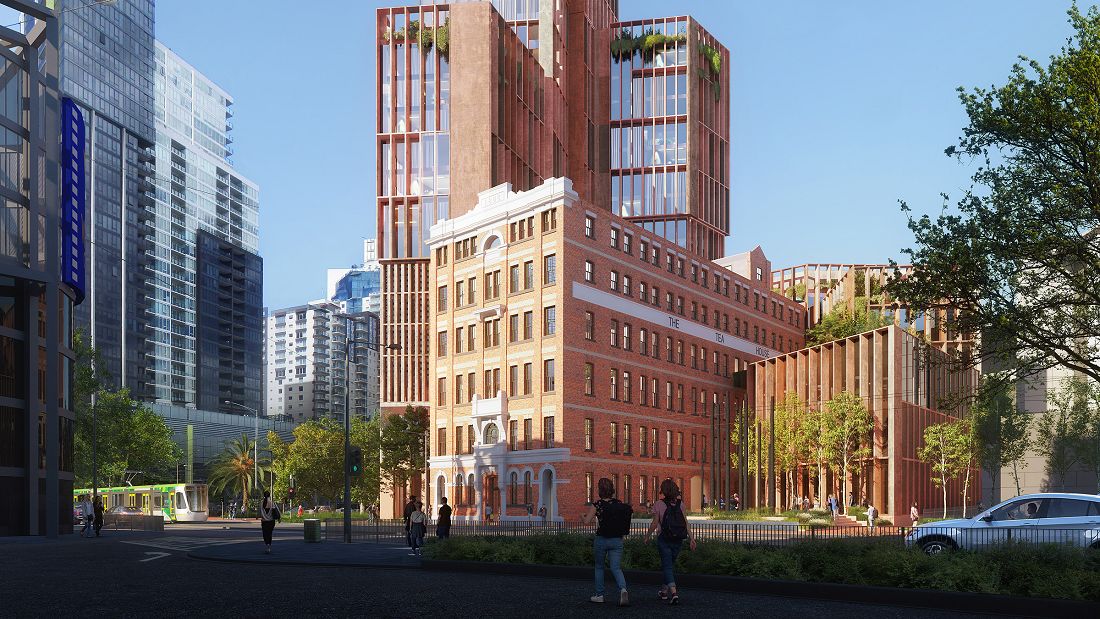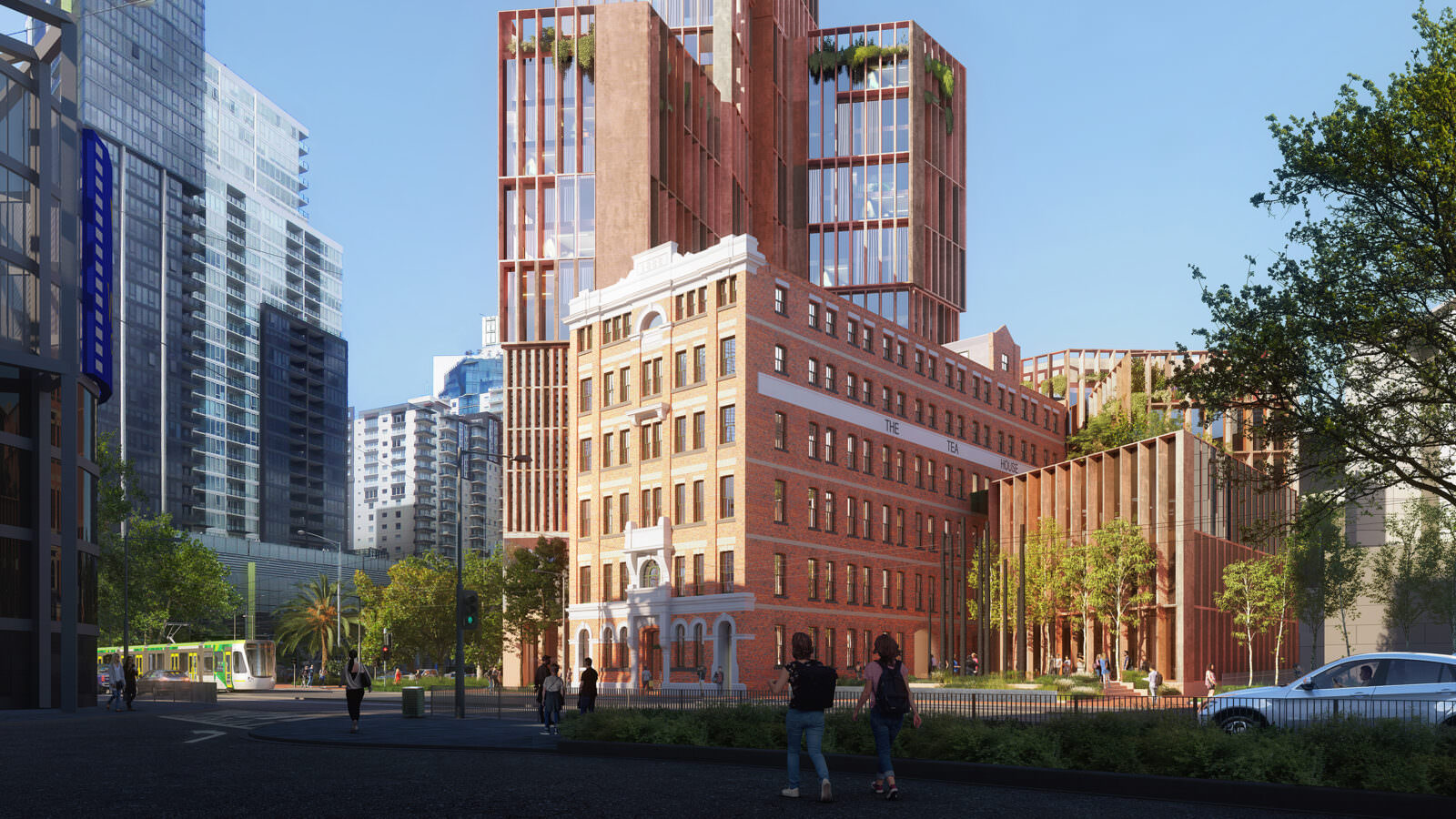CostaFox Gets Nod for $100m Southbank Skyscraper

CostaFox, the boutique platform put together by developer Michael Fox and backed by wealthy investor Robert Costa, has received the first tick of approval for its $100-million redevelopment of the heritage-listed Robur Tea House in central Melbourne.
At Tuesday, August 16’s Future Melbourne Committee meeting, CostaFox’s proposal for 28 Clarendon Street in Southbank was unanimously approved and will now be forwarded to Heritage Council Victoria.
The site, at the north-west corner of Normanby Street neighbouring the Melbourne Convention and Exhibition Centre and Crown Casino, is currently home to the 135-year-old warehouse.
CostaFox purchased the property, which has a footprint of around 600sq m on a site of nearly 3000sq m, for $28 million in mid-2019.
Following the acquisition, Costafox launched a global search for an architect to work on the building’s restoration and redevelopment.
The six-storey building was built in the 1880s and was, for years after completion, the tallest structure outside the CBD. It was first occupied by a printer and manufacturing stationer before later being used by the Robur Tea Company to store tea chests.
CostaFox enlisted Norwegian architecture practice Snohetta to design its two-tower proposal, which will reach 25 storeys at its highest point.
At the time, Michael Fox said the corner site was in need of transformation and the developer’s plan was not just about rejuvenating the Tea House building, which has been empty for five years, but to reinvigorate the whole western end of the city.
Under plans put forward midway through 2021, CostaFox intends to build a mixed-use precinct comprising a hotel, high-end apartments, office and retail spaces as well as a basement carpark.
The heritage warehouse will act as the hotel entrance and lobby for the future hotel and will be partially demolished.
City of Melbourne councillor Rohan Leppert said the design response had met some “very challenging constraints” while pushing the envelope in the discretionary density and height controls.
“We have separated out all the heritage matters and agree that the result is a very high quality building,” Leppert said.
“The site is one of the most over-engineered corners in Melbourne but it is also flood prone and a swimming pool during winter. The difficulties of designing on this site don’t only go to heritage but also the drainage under the western end of the site.
“There has been a very resilient approach to ensuring the proposed building is resilient to future floods and with all of the considerations in mind for a project of this size on this corner, the design outcome is really impressive.”
CostaFox has a strong record of incorporating historic buildings into new developments.
In 2014, it won the Australian Property Institute Heritage Award for its redevelopment of the former art deco Tip Top Bakery, in Brunswick East. The 1.2ha site is now a lifestyle precinct, including a childcare centre and a specially designed rooftop outdoor space.
CostaFox also has approval to develop an eight-storey strata office complex within the airspace of a red brick warehouse at 1-11 Gordon Street, Cremorne.
Last year, the developer acquired Geelong’s iconic Stella Maris Convent Mansion, a 1.2ha waterfront property in Rippleside, for $11.3 million. Costafox is planning to retain the mansion and reposition the site as part of a new residential scheme, involving prestige homes and apartments.
Its proposal in Southbank is significantly different from a previous application for a 39-storey development on the site, submitted in 2017 by developer RJ International, which was rejected by Heritage Victoria on the grounds that the new development would have “substantial detrimental impact” on the Tea House.
Snohetta principal Kare Krokene said the warehouse was one of the few remaining traces of the industrial and warehouse establishments that dominated the south bank of the Yarra until the 1970s and would be respected and celebrated as part of the new project.
“We are trying to restore the past prominence of the tea house and these companion buildings together will form a transition between the commercial buildings in South Melbourne down to the Yarra River,” Krokene said.
“This project has now become a reference point internally at our firm as exemplary design in regards to heritage interpretation and urban design.”
The heritage building will be used to create 4000sq m of A-grade office space on floors one, two and three, with rooftop restaurants and bars to occupy the first, third and fifth floors. It will also include associated end-of-trip facilities, retail and 40 bicycle parks.
The new north tower will rise three floors at its lowest, preserving the Robur Tea House view from the CBD, while the more substantial south building—to be branded Tea House Hotel—will feature 154 guest rooms, 20 apartments, a pool, gym and wellness centre.
Both buildings will share a public podium configured with restaurants and a bar while a 200sq m landscaped forecourt will be developed in the setback—part of the public benefit required by the government for projects of significance.
Pending authorisation from the Heritage Council of Victoria, CostaFox’s proposal will then go before Victorian planning minister Richard Wynne for a final seal of approval.
← Back
